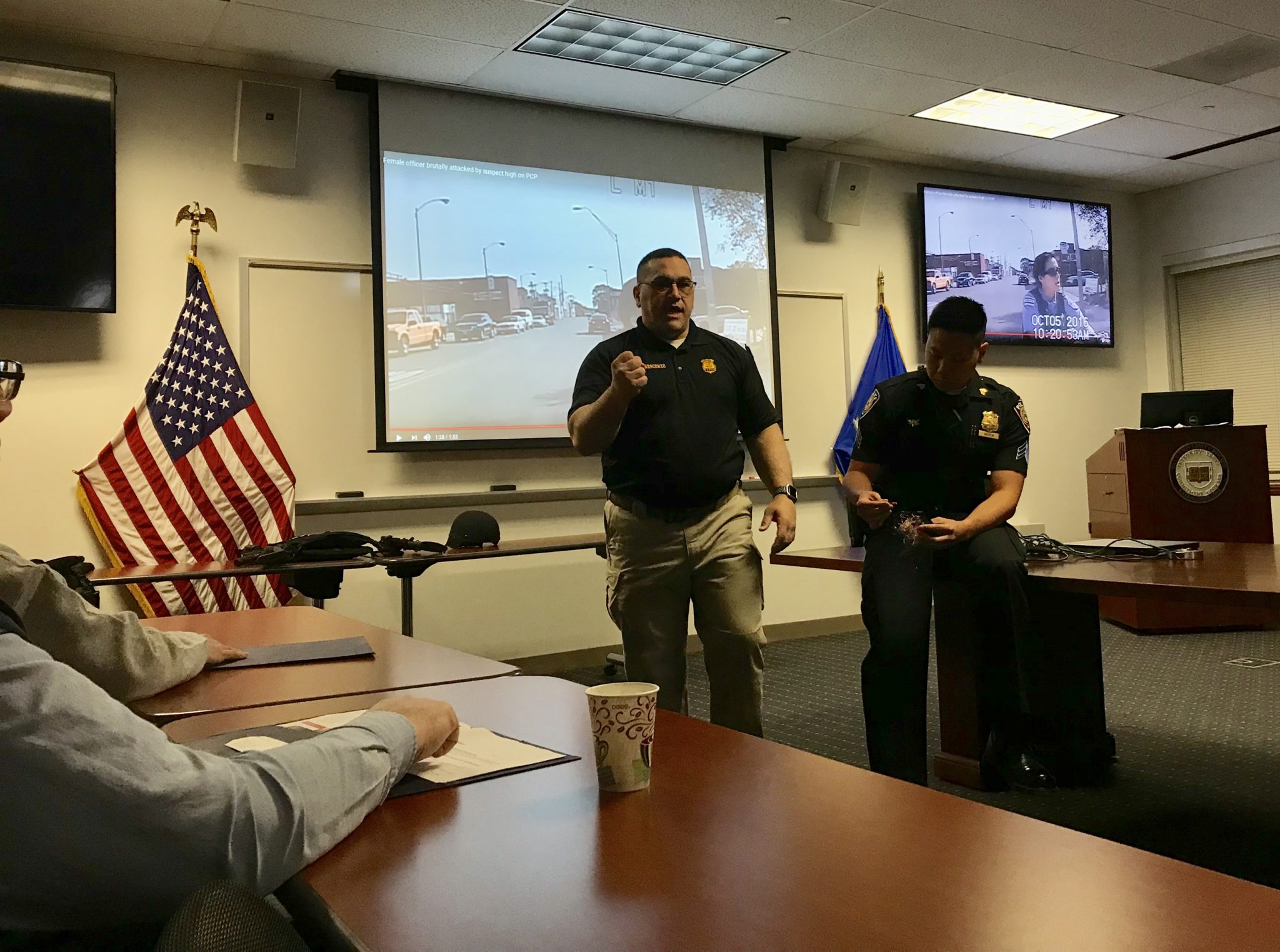
A medical student, a retired police officer and a Yale University Art Gallery security guard were three of the people who passed around an unloaded glock on Tuesday evening as part of Yale’s Citizen’s Police and Public Safety Academy.
Yale Police Department Chief Ronnell Higgins and the YPD invite members to the annual program, which provides attendees an inside look into Yale’s police and security operations through classroom training and interactive activities.
Now in its eleventh year, the program is designed not only to promote a deeper understanding of the YPD’s public safety duties, but also to strengthen public trust with the community YPD serves, said Assistant Chief Steven Woznyk in a statement to the News.
The program runs every Tuesday evening from March 27 to May 1 and is coordinated by YPD Lieutenant Jay Jones. Over the course of the six weeks, the YPD covers patrol procedures, personal safety, emergency preparedness and firearms. The first session, which covered the history and security operations of the YPD, welcomed a special guest: Whitney, the Yale explosives detection dog.
Stephen Woods, associate director of emergency management, began Tuesday’s session with a video called “Preparing Makes Sense,” which outlined steps to take in emergencies. In his slideshow, he discussed how to make emergency and communication plans for floods, blizzards, ice storms and hurricanes.
“Things that all happened this winter,” Woods added, prompting chuckles from the audience.
The biggest takeaway from Woods’ presentation was three simple words: Plan. Evaluate. Respond. Woods passed around a small card with action steps for combatting approaching emergencies, as well as an information sheet about emergency response at Yale.
The 15-person class sat in a large viewing room with eight people lining each side. Participants — all middle-aged adults or older — would raise their hands and engage in open dialogue as if it were a Yale College discussion section.
Woods screened a Yale-produced video that offered a full walkthrough of how the University would respond to an active shooter. Following the video, one class participant, the YUAG security guard, said the museum has done full-day active shooter response training when the museum is closed.
Input from class participants is one of the most important aspects of the Citizen’s Police Academy, according to Sergeant Frank DeCrescenzo, Jr., who led the next portion of the academy.
“They’ll push if they don’t feel like they’re getting the answer that they want,” he said.
When he took over the session, DeCrescenzo discussed control tactics and use of force. He began his presentation with a question: “When you think of police use of force, what comes to mind?” DeCrescenzo noted that even the mere presence of a police officer amounts to a use of force.
DeCrescenzo gave an overview of the laws of arrest and use of force, displaying on the screen Connecticut statutes for the class to read and discuss. He spoke about being judicious with charges and actions, outlining the “force decision-making loop:” an active, continuous process of assessing perceived suspect action, reasonable officer response and reassessment.
The class session ended with a display of the equipment that the YPD uses, including rifles, SWAT helmets, tasers, handguns and bullet-proof vests. As well as passing around the unloaded glock, the class members examined a deconstructed taser and tried on a bullet-proof vest.
YPD Police Sergeant Thomas Nguyen said he hopes the presentation allowed attendees to develop a deeper understanding of the use of force.
Kalfani Ture, who teaches the Yale College course “Ethnography of Policing and Race,” said he attended the academy because he wanted to familiarize himself with how policing operates at Yale so he can respond intelligently to his students’ questions.
Registration to the program is open to all members of the Yale and New Haven community who are 18 years or older.
Sammy Westfall | sammy.westfall@yale.edu







